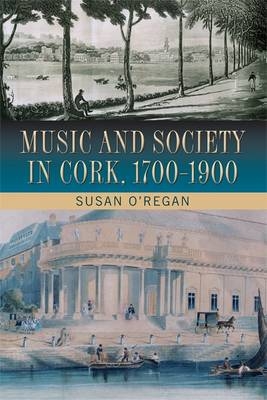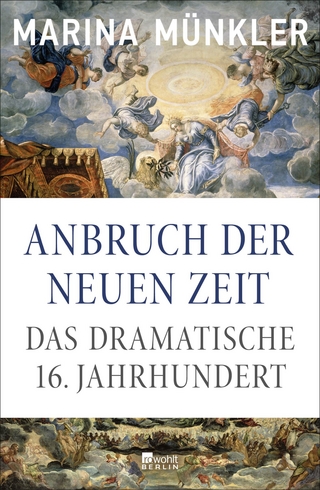
Music and Society in Cork, 1700-1900
Seiten
2018
Cork University Press (Verlag)
978-1-78205-220-3 (ISBN)
Cork University Press (Verlag)
978-1-78205-220-3 (ISBN)
Presents, for the first time, an in-depth and wide-ranging study of public musical life in Cork from the early eighteenth century to the end of the nineteenth century. The city's strategic location facilitated rapid economic growth and urban social patterns consolidated within its mercantile communities. Local professionals collaborated with touri
This book presents, for the first time, an in-depth and wide-ranging study of public musical life in Cork from the early eighteenth century to the end of the nineteenth century. The city's strategic location facilitated rapid economic growth during the eighteenth century, and urban social patterns consolidated within its mercantile communities. Local professionals collaborated with touring performers in sustaining a vibrant concert life, to which military and yeomanry bands frequently contributed. Visiting theatre companies from Dublin brought professional musicians and singers, giving local audiences a taste of current metropolitan repertoire. The cathedral of St Fin Barre maintained a core of professionals who were influential teachers and performers in the city. In the politically charged environment following the Act of Union, a growing sense of Irish identity through awareness of Ireland's past was evident in the proliferation of songs by Thomas Moore and the appearance of the Irish harp in concerts. These featured alongside excerpts from Italian opera, English glees, and the virtuosic offerings of touring composer-performers, notably Paganini and Liszt. Local press writing emerged as an important element of concert promotion. From the 1840s onwards, wider movements promoting temperance and social reform were reflected in dedicated local organisations that sponsored music education, and temperance bands and singing classes proliferated. Despite political and sectarian tensions, choral societies emerged as a key element of middle-class sociability during the late nineteenth century. Musical structures in the city's new Catholic churches, a municipal school of music, and a new opera house were amongst the late nineteenth century developments that marked music as a vital strand in Cork's expanding social and civic life.
This book presents, for the first time, an in-depth and wide-ranging study of public musical life in Cork from the early eighteenth century to the end of the nineteenth century. The city's strategic location facilitated rapid economic growth during the eighteenth century, and urban social patterns consolidated within its mercantile communities. Local professionals collaborated with touring performers in sustaining a vibrant concert life, to which military and yeomanry bands frequently contributed. Visiting theatre companies from Dublin brought professional musicians and singers, giving local audiences a taste of current metropolitan repertoire. The cathedral of St Fin Barre maintained a core of professionals who were influential teachers and performers in the city. In the politically charged environment following the Act of Union, a growing sense of Irish identity through awareness of Ireland's past was evident in the proliferation of songs by Thomas Moore and the appearance of the Irish harp in concerts. These featured alongside excerpts from Italian opera, English glees, and the virtuosic offerings of touring composer-performers, notably Paganini and Liszt. Local press writing emerged as an important element of concert promotion. From the 1840s onwards, wider movements promoting temperance and social reform were reflected in dedicated local organisations that sponsored music education, and temperance bands and singing classes proliferated. Despite political and sectarian tensions, choral societies emerged as a key element of middle-class sociability during the late nineteenth century. Musical structures in the city's new Catholic churches, a municipal school of music, and a new opera house were amongst the late nineteenth century developments that marked music as a vital strand in Cork's expanding social and civic life.
Susan O'Regan lectures in Music History at Cork Institute of Technology
| Erscheinungsdatum | 28.02.2017 |
|---|---|
| Verlagsort | Cork |
| Sprache | englisch |
| Maße | 156 x 234 mm |
| Themenwelt | Kunst / Musik / Theater ► Musik ► Klassik / Oper / Musical |
| Geschichte ► Allgemeine Geschichte ► Neuzeit (bis 1918) | |
| Geisteswissenschaften ► Geschichte ► Regional- / Ländergeschichte | |
| Geschichte ► Teilgebiete der Geschichte ► Kulturgeschichte | |
| Geschichte ► Teilgebiete der Geschichte ► Sozialgeschichte | |
| ISBN-10 | 1-78205-220-8 / 1782052208 |
| ISBN-13 | 978-1-78205-220-3 / 9781782052203 |
| Zustand | Neuware |
| Informationen gemäß Produktsicherheitsverordnung (GPSR) | |
| Haben Sie eine Frage zum Produkt? |
Mehr entdecken
aus dem Bereich
aus dem Bereich
Giordano Bruno - ein ketzerisches Leben
Buch | Hardcover (2024)
C.H.Beck (Verlag)
29,90 €
das dramatische 16. Jahrhundert
Buch | Hardcover (2024)
Rowohlt Berlin (Verlag)
34,00 €


